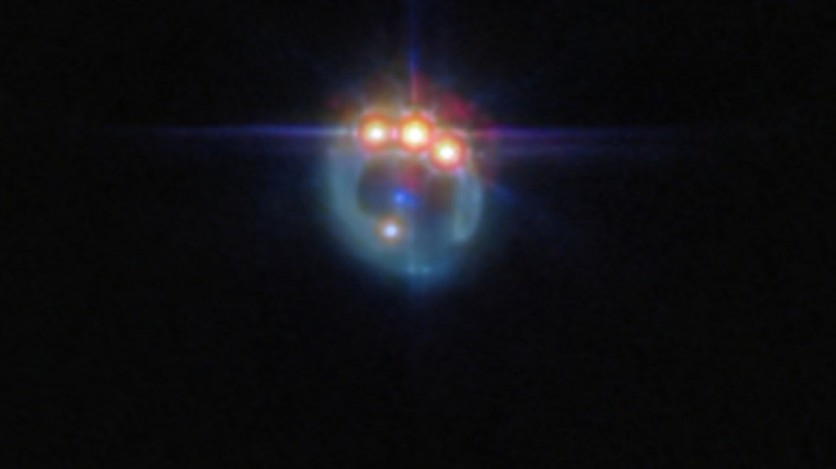The powerful infrared eyes of the James Webb Space Telescope captured a sparkling jeweled ring in the depths of space, all made by a mesmerizing cosmic phenomenon known as gravitational lensing.
This image, featuring the quasar RX J1131-1231, highlights a remarkable lensing effect that provides a unique glimpse into the distant universe.

Gravitational Lensing Produces a Cosmic Jeweled Ring
The image shows a galaxy distorted by gravitational lensing into a dim ring. At the top of the ring, three bright spots with diffraction spikes can be seen close to each other.
These spots are actually multiple copies of a single quasar, duplicated by the gravitational lens. According to ESA, RX J1131-1231 is located roughly six billion light-years from Earth in the constellation Crater and is regarded as one of the best-lensed quasars discovered so far.
The foreground galaxy distorts the image of the background quasar into a bright arc, creating four distinct images of the object. This phenomenon, first predicted by Einstein, serves as a natural telescope, magnifying light from distant sources and offering a rare opportunity to study regions close to the black holes in far-off quasars.
Gravitational lensing occurs because all matter in the universe warps the space around itself, with larger masses producing a more pronounced effect. Light passing near massive objects like galaxies bends due to the warped space around them, visibly deviating from its original path.
This gravitational lensing effect magnifies distant astronomical objects, enabling astronomers to study those that would otherwise be too faint or distant to observe.
X-ray emissions from quasars offer crucial insights into the spin rates of central black holes, offering clues about their growth. If a black hole primarily grows through galaxy collisions and mergers, it accumulates material in a stable disc, resulting in a rapid spin.
Alternatively, if it grows through numerous small accretion episodes, it gathers material from random directions. Observations of the black hole in quasar RX J1131-1231 show it spinning at over half the speed of light, indicating growth through mergers rather than random accretion.
Read Also : NASA's James Webb Space Telescope Captures Bright Hourglass-Shaped Dust Clouds Around Forming Star
Dark Matter
The image of RX J1131-1231 was captured using Webb's Mid-Infrared Instrument (MIRI) as part of a study on dark matter, an invisible form of matter that constitutes most of the universe's mass.
Webb's observations of quasars like RX J1131-1231 enable astronomers to explore dark matter at more minor scales than previously possible. The James Webb Space Telescope's detailed imaging of gravitational lensing events creates new opportunities for understanding the universe.
By magnifying distant objects and bringing them into sharper focus, gravitational lensing allows astronomers to gain insights into the properties and behaviors of black holes, galaxies, and other celestial phenomena.
Related Article : NASA Unveils New 3D Visualization of the Majestic Pillars of Creation Captured by Hubble and Webb

ⓒ 2025 TECHTIMES.com All rights reserved. Do not reproduce without permission.




